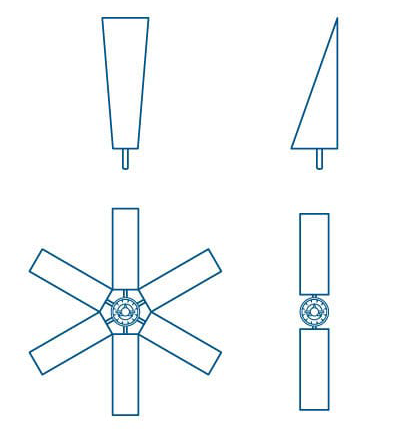This lesson introduces students to blade design testing. To do this, students will collect, evaluate, and present data about different blade design variables and how they performed in an energy production test. This lesson will give students a firmer grasp on how wind energy is converted into electricity, and how to extract as much energy as possible from the wind.
The Details

Grades
6th - 8th Grade
9th - 12th Grade
Time Required
1-2 class periods
Downloads
Printables
Materials
- 1 Model turbine on which blades can quickly be interchanged
- 1 Multimeter or voltage/current data logger
- 1 Box fan
- Milk cartons, PVC pipe, or paper towel rolls (optional)
- Ruler
- Pictures of wind turbine blades
- Sample blades of varying sizes, shapes, and materials
- Balsa wood, corrugated plastic, card stock, paper plates, etc.
- ¼” Dowels
- Duct tape and/or hot glue
- Scissors
- Protractor for measuring blade pitch
- Safety glasses
- Poster-size graph paper (optional)
- Student reading passages and student worksheets
Next Generation Science Standards
Disciplinary Core Ideas
- MS-PS3.A Definitions of Energy
- MS-PS3.C Relationship Between Energy & Force
- MS-ETS1.A Defining and Delimiting Engineering Problems
- MS-ETS1.C Optimizing the Design Solution
- HS-PS3.A Definitions of Energy
- HS-PS3.C Relationship Between Energy & Force
- HS-ETS1.A Defining and Delimiting Engineering Problems
- HS-ETS1.C Optimizing the Design Solution
Cross-Cutting Concepts
- Cause & Effect
- Energy & Matter
Learning Objectives
- Understand how wind energy is converted to electricity
- Know the process of scientific inquiry to test blade design variables
- Be able to collect, evaluate, and present data to determine which blade design is best
- Understand the engineering design process method
